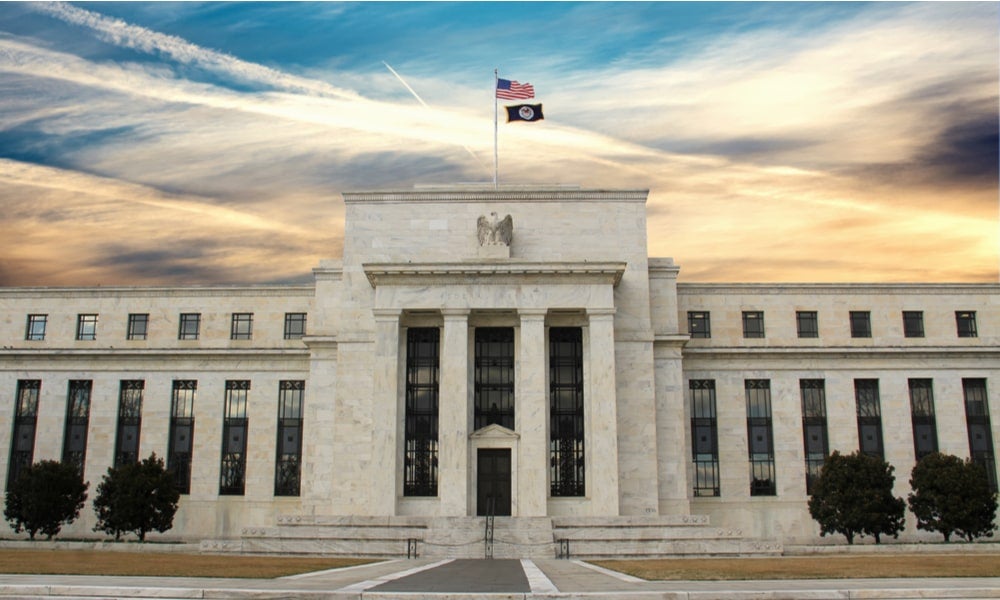Should interest rates be capped?
One of the touted solutions to rising interest rates is an interest rate cap, though this could have repercussions for banks and available capital, writes UNSW Business School's Mark Humphery-Jenner
The idea of an interest rate ceiling often resurfaces around looming rate hikes. Indeed, Clive Palmer has suggested there should be an interest rate cap. This would restrict what banks can charge customers. He has promoted this as a solution to ‘cost of living’ pressures and to housing affordability concerns or perceived housing ‘inequality’ issues.
This has become important given recent rate hikes. The Reserve Bank of Australia (RBA) increased interest rates in May by 25 basis points and more rate hikes appear set to come. The US interest rate is relevant as it will influence Australian banks’ cost of capital to varying degrees. The Federal Reserve has recently increased its policy rate by 50 basis points. Reportedly, around 70 per cent of banks’ capital comes from deposits, but they are increasingly exposed to overseas markets and overseas rate hikes influence Australian banks’ rates. This is especially so given that the RBA is winding down the so-called term funding facility (TFF) which gave relatively cheap debt to banks.
But, is an interest rate cap a solution to anything? Or, could it have other significant unintended consequences? It turns out that an interest rate cap is bad policy and would – ironically – worsen the perceived problems that it aims to solve. And, this is even assuming the rate cap is not legally challenged.

How do banks set interest rates?
We first need to start with how banks set interest rates. Clearly, banks must make a profit. Otherwise, no shareholder would invest and no one would give banks money as the banks would soon head towards bankruptcy themselves. But, in a competitive market, which factors might influence rates?
Capital sources and the cost of capital: Banks obtain their money from two main sources: depositors and lenders to the bank. When one deposits money into a bank, the bank can then lend it. But, this only covers a portion of the capital. If the bank has more good loans than they have deposits, they need to borrow the money from another party. This party is often overseas. Thus, international rates influence banks’ cost of capital. These have been increasing.
The RBA’s policy rate is not the bank’s cost of capital. The policy rate only influences some of the banks’ costs. Thus, if the RBA moves rates, the bank does not follow always in lockstep. The policy rate does, nevertheless, influence a portion of the bank’s capital costs.
Read more: Rising interest rates and inflation: signs of economic pain to come?
Furthermore, central banks influence interest rates in other ways. The cash rate is only one tool. The central bank can engage in “quantitative tightening”. This is the opposite of quantitative easing, under which the central bank buys government debt. This increases demand for said debt, and reduces the required yield on said debt. This implicitly lowers the required return on government debt and can lower interest rates in the economy.
Quantitative tightening is the opposite. It involves selling – or at least not buying – debt. Both the Federal Reserve and the RBA have signalled that this will occur. Both seem intent on letting the debt they hold expire and have indicated that they will not buy new debt. This reduces the central banks’ balance sheets.
Other more esoteric tools can come into play. These include the rates that apply to exchange settlement accounts that banks have with the RBA. Increasing such rates can reduce the incentive to lend money externally. This can reduce the amount of capital in the economy. In turn, this can have an indirect – albeit relatively minor – impact on rates.

Risk levels: Banks also consider risk levels. This is clear from discretionary pricing on loans. It is also clear from the different rates charged on different types of mortgages, chattel mortgages, personal loans, and commercial loans. This is inherent in Australian Prudential Regulation Authority (APRA)-related prudential management. APRA requires banks to have more safe capital the riskier are the banks' loans. Thus, a riskier loan creates a greater ‘opportunity cost’ as it prevents the bank from deploying more capital. This can induce banks to charge higher rates. This is in addition to the need to increase returns lest the borrower default.
There must further be a gap between the cost of capital and the rates banks charge. Even if the bank does not intend to earn a profit, it will need to keep some capital in reserve to absorb defaults. It must also employ staff. Thus, banks have costs. This forces banks to charge more for loans than they can pay to depositors.
Therefore, banks set rates in an international market and with respect to the riskiness of a borrower and their costs.
Read more: Australia's mortgage interest rates are fixed for shareholders, not home owners
What then is the impact of an interest rate ceiling?
An interest rate ceiling is bad policy. An interest rate ceiling caps the return a bank could obtain from a loan. Thus, some loans will no longer be economic or desirable. Some loans will simply not pay enough to justify the cost of capital. The bank would then take steps to de-risk itself. It could do this in several ways.
Capital rationing: The bank might simply ration capital. Here, it would only lend to safer borrowers, who are relatively risk-free. These borrowers would justify the cost of capital. Therefore, fewer loans would emerge. Depending on how the cap is set, and which loans it applies to, it might also skew the loan book towards lending that is capped less. Indeed, where interest rate caps have been tried, there is evidence that capital rationing occurs.
Higher deposits: The bank could equivalently impose higher deposit requirements. The higher deposit requirement reduces the bank’s risk. It sends a signal that the individual can save money and is less likely to default. It further reduces the loan to value ratio, increasing the likelihood that the bank could recoup any losses should the borrower default. This ultimately would make loans more difficult to obtain and would reduce lending.
The net result is that an interest rate ceiling would harm economic activity by reducing borrowing. This would reduce factors such as construction. It would also reduce consumer spending as it would increase the money that individuals would devote towards non-saving expenditures. This would harm growth.

House prices, affordability, and inequality: The interest rate ceiling would also exacerbate housing ‘inequality’ issues. At a superficial level it looks attractive because it would cap borrowing costs. But, ultimately, it would simply direct money to safer borrowers and/or borrowers who already can save more. Such borrowers are likely to be relatively wealthy. Thus, the policy would, ironically, worsen perceived housing inequality concerns.
But what if there is a metaphorical magic pudding of money and the government can magically facilitate 3 per cent loans for everyone? Surely then, there would be no capital rationing? The deposit issue notwithstanding, this would increase house prices by reducing the maximum monthly repayment. This would worsen a housing bubble. Even Clive Palmer has conceded that the policy could increase house prices, owing to the. Ironically, this could more than offset any saving that was supposed to arise from the lower interest rate. Further, if/when such a policy expires, and interest rates surge past 3 per cent, borrowers would likely be left unable to repay their debts. In turn, this creates a prudential risk and ultimately harms the people the policy was designed to help.
The net result is that an interest rate cap is bad policy. It would not fix a problem and ultimately could worsen existing perceived problems by making housing more difficult to obtain and harming growth.
Mark Humphery-Jenner is an Associate Professor in the School of Banking & Finance at UNSW Business School. He has been published in leading management journals and his research interests include corporate finance, venture capital and law. For more information please contact A/Prof. Humphery-Jenner directly.
